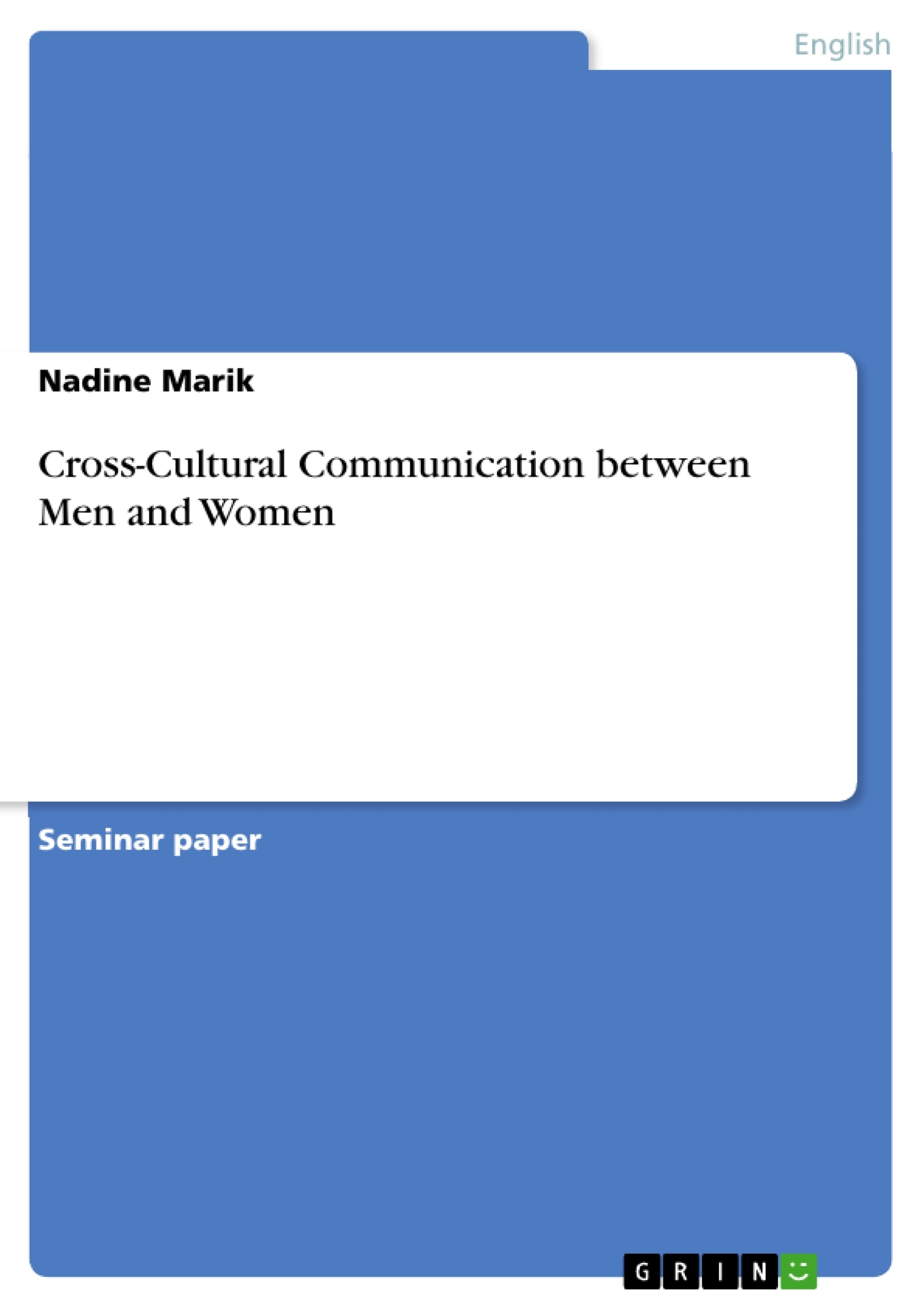Resumen o Introducción
In the recent history of linguistics, there have been various approaches to analyse women’s and men’s speech. It was the goal of these studies to find out if men and women speak differently. Their speech behaviour was analysed in respect to phonology, lexical choice and usage as well as interactions between men and women in discourse. Traditionally, sociolinguists have looked at gender in discourse in connection with ethnic background, age, level of education and socio-economic status. Many theories claim that differences in language result from the male tendency to dominate women, and have seen female speech behaviour as a deviation from male speech norms. Deborah Tannen, professor of linguistics at Georgetown University, has developed a different model. She claims that male-female communication is cross-cultural. Men and women may grow up in the same country, in the same society and culture, but they are members of different genders, different subcultures. Men and women talk differently: they apply different speech norms and have different expectations for their interlocutors. Misunderstandings between the sexes easily arise in discourse. In the following I will elaborate on the nature of the two different cultures, their origins, and give examples on how the gender-related cultural norms affect language. Although some of these speech-norms are apparent in western cultures, the main focus will be on Anglo-American culture.
Deborah Tannen regards men and women as belonging to two different cultures. The juxtaposition of power on the male side and solidarity on the female side is the key difference between their communities. Other differences in attitudes and values are results of this contrast. Gender is not just biological sex. In linguistics, genderlect refers to an acquired form of speech behaviour that individuals learn from early on. Children learn how to behave from parents and, more importantly, from their peers. Interaction in same-sex groups of children can explain or hint at the psychological behaviour that members of each sex develop. In the male community, power and status are important values that every man will endeavour to attain and maintain. Men perceive life in hierarchies, and continuously struggle to show or defend their status in society. In communication, too, one is always one-up or onedown. Furthermore, men value independence, their language creates distance. The female world differs in attitudes and values.
- Citar trabajo
- Nadine Marik (Autor), 2006, Cross-Cultural Communication between Men and Women, Múnich, GRIN Verlag, https://www.grin.com/document/66548
Así es como funciona






















Comentarios